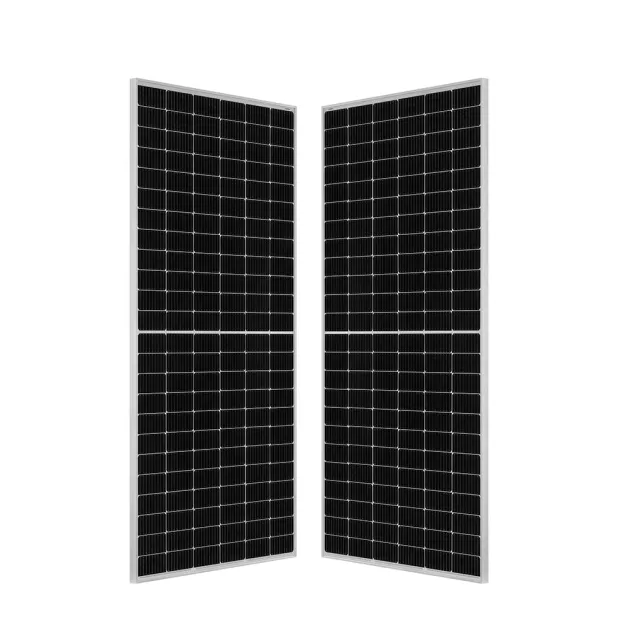Solar Panel Types and Best Choices
Author:
Hou
Jan. 16, 2025
61
0
0
Are you curious about the types of solar panels? This article breaks down the three main types: monocrystalline, polycrystalline, and thin-film solar panels. Learn the differences between them and find out which one is best for your new solar panel installation needs.Or, if you want to save time and money, why not get a solar panel quote from one of our experts who can explain everything to you in detail?Solar panels use two main technologies: photovoltaic (PV) systems, which convert sunlight directly into electricity; and concentrated solar power (CSP), which uses mirrors or lenses to focus sunlight to generate heat, which in turn generates electricity.There are three main types of solar panels: monocrystalline, polycrystalline and thin-film, each type differing in efficiency, cost and application. Monocrystalline panels are the most efficient but also the most expensive, while thin-film panels are less efficient but lighter and more flexible.In recent years, solar panel technology has made significant progress, such as PERC panels, double panels and perovskite solar panels, which have greatly improved efficiency and performance. Future trends also include quantum dot solar panels and hybrid solar panels.Different Types of Solar PanelsSolar panels are amazing devices that convert sunlight into electricity, a process based on solid scientific principles. At their core are solar cells, the basic building blocks of all solar panels. By capturing and converting solar energy, these cells generate renewable energy, reducing our reliance on fossil fuels and lowering carbon emissions.Solar panels use two main technologies: photovoltaics (PV) and concentrated solar power (CSP). PV systems, the most common, convert sunlight directly into electricity through solar cells, while CSP uses mirrors or lenses to concentrate sunlight to generate heat, which in turn generates electricity.The photovoltaic effect is the cornerstone of solar technology. When sunlight, which consists of tiny particles (photons), strikes the semiconductor material within a solar cell, it stimulates the flow of electrons, generating an electric current. This process is essential in all types of solar panels, from single-crystal silicon to thin-film solar panels.Silicon solar cells are the most common type in the industry. These cells are made of silicon, an abundant semiconductor material that efficiently converts sunlight into electricity. The manufacturing process of monocrystalline silicon cells involves cutting silicon crystals into thin slices, which is efficient but also costly.There are three main types of solar panels, each with its own unique features and advantages.Additional reading:Top 5 BIPV Products Transforming Solar Energy for HomesTransform Your Home: Solar Panel Floor Tiles Explained!Key Considerations for Buying 455W Solar PanelsKey Benefits of Off Grid Solar Systems ExplainedBoost Your Energy: Custom Solar Battery Chargers ExplainedHow Can Homeowners Maximize Savings with 430 Watt Solar Panels?How Will Customized Solar Fans Revolutionize Outdoor Living?- Monocrystalline solar panels: Made of single-crystal silicon, they have a uniform dark black appearance, high efficiency (18% to 24%), are durable and space-efficient, but also cost more.
- Polycrystalline silicon solar panels: Made by melting silicon fragments and recrystallizing them, they have a blue and spotted appearance, an efficiency of about 15%, are low-cost and environmentally friendly.
- Thin-film solar panels: Made by depositing thin layers of photovoltaic materials on a substrate, they are lightweight and flexible, suitable for situations where space is limited or installation requirements are unique, but they have lower efficiency and durability.
Advanced solar panel technologyWith the advancement of technology, a variety of high-efficiency solar panels have emerged, such as PERC panels, double-sided panels and perovskite solar panels.- PERC board: By adding a passivation layer to reduce electron recombination, improve efficiency, and is suitable for installation in limited space.
- Double-sided panels: can capture sunlight from both sides, increase energy output, and are suitable for various environments.
- Perovskite solar panels: have high efficiency potential (around 25%), but face challenges with long-term stability and scalability.
Compare Solar Panel TypesWhen choosing a solar panel, you need to consider efficiency, cost, and durability. Monocrystalline silicon panels have the highest efficiency but the highest cost, polycrystalline silicon panels have lower cost but slightly lower efficiency, and thin-film solar panels have the lowest cost but the lowest efficiency and durability.Choosing the right solar panelChoosing solar panels requires consideration of efficiency, material quality and installation conditions. Residential installations are suitable for high-efficiency monocrystalline panels, while commercial and industrial applications may prefer more cost-effective polycrystalline panels or install flexible thin-film solar panels.Solar panel technology has a bright future, and new technologies such as quantum dot solar panels and hybrid solar panels are gradually moving towards commercialization. These new technologies are expected to further improve efficiency and performance, promoting the popularization of solar energy applications.- What are the main types of solar panels?
- Monocrystalline silicon, polycrystalline silicon and thin film solar panels.
- What is the Photovoltaic Effect?
- The photovoltaic effect is the process by which solar cells convert sunlight into electrical energy.
- How long do solar panels last?
- Monocrystalline silicon panels can usually be used for 25 to 40 years, polycrystalline silicon panels for about 25 years, and thin-film solar panels for shorter periods of time.
- PERC panel is a high-efficiency solar panel that improves the efficiency of electron utilization by adding a passivation layer.
- Are thin-film solar panels suitable for residential use?
- It is not recommended at this time because thin-film solar panels are less efficient and less durable.
Additional reading:Why You Need a Pure Sine Wave InverterSolar Floor Tiles: 7 Benefits You Didn’t Know About!Amorphous vs Crystalline Silicon: Key Differences ExplainedWhat are the benefits of large format solar panels?EV Motors: AC vs DC - Which Is Right for You?Can You Install a DC Quick Charger for Your EV?What Are the Benefits of 16 Inch Solar Fans?

Comments
Please Join Us to post.
0